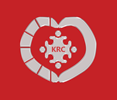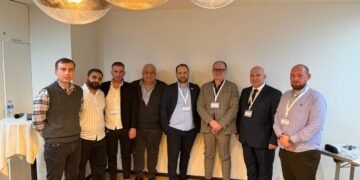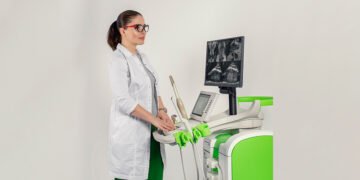The Latest Model Swiss Storz (Storz Medical Duolith SD1 T-TOP) Device at the “Karazanashvili Robotic Center”
What is shockwave therapy and what are its effects?
Shockwave therapy is one of the most effective therapeutic-rehabilitative methods in modern medicine. In terms of the sophisticated mechanism of action on the body’s tissues, it currently has no analogs.
Shockwave therapy is widely used in medical fields such as: traumatology, orthopedics, physiotherapy, sports medicine, andrology, urology, neurology, aesthetic medicine, and dermatology.
Storz Medical DUOLITH SD1 T-Top F-SW Ultra
The main effects of this type of therapy are: rapid pain relief, restoration of movement, reduction of inflammation, wound healing, stimulation of neoangiogenesis (development of new blood vessels), improvement of blood circulation and metabolism, breakdown of fibrous areas and calcifications, and tissue regeneration.
Shockwave therapy is non-invasive and does not require anesthesia. It is an ideal method for treatment and rehabilitation of diseases in both acute and chronic stages.
It effectively treats: impotence, prostatitis, Peyronie’s disease, pelvic pain, joint pain, and any type of neuralgic pain.
The Storz Medical Duolith SD1 T-TOP device is already available at the Karazanashvili Robotic Center.
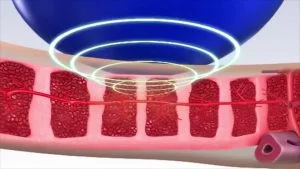

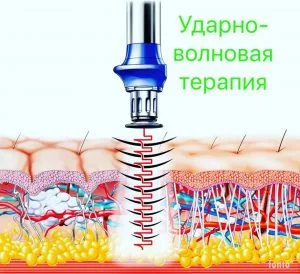
What is the mechanism of action of shockwave therapy?
A shockwave is essentially an acoustic wave, a low-frequency impulse with a certain amplitude that delivers high energy to the affected tissues. This energy reduces inflammation, alleviates pain, stimulates the development of new blood vessels, and promotes the healing and regeneration of tissues.
High-energy acoustic waves penetrate deeply into the tissues and exhibit therapeutic and restorative effects, accelerating the rehabilitation of inflamed and damaged areas, as well as cellular restoration and renewal.
The biological mechanism of action of shockwave therapy is based on the principle of cavitation – the permeability of cellular membranes in inflamed tissues changes.
It is true that acoustic waves normally and easily penetrate the elastic membranes of healthy cells, but they do not affect them. However, when the impulse comes into contact with inflamed or damaged elements, cavitation occurs (instant stretching-compression followed by closure), which ultimately leads to the disruption and breakdown of the damaged areas. With the help of the accompanying activated biochemical processes, these areas are replaced by new cells.
Shockwave therapy has several effects simultaneously:
It helps stimulate the development of new blood vessels.
For the process of tissue recovery, enhanced blood circulation is a crucial factor. Under the influence of acoustic waves, the levels of tissue growth and regeneration indicators, such as the following, significantly increase:
- BMP – Bone Morphogenetic Protein
- ENOS – Endothelial Nitric Oxide Synthase
- VEGF – Vascular Endothelial Growth Factor
- PCNA – Proliferating Cell Nuclear Antigen
Through the influence of these indicators, the formation and growth of new arterioles are stimulated. The newly developed blood vessels improve tissue perfusion and oxygenation, which, in turn, ensures both wound healing and the restoration of damaged tissues.
It reduces chronic inflammation.
One of the key roles in controlling the inflammatory process is played by macrophages, which help produce chemokines and cytokines. The activity of these macrophages increases under the influence of acoustic waves. As a result, inflammation subsides, pain disappears, and tissues regenerate quickly.
It causes the dispersion of the pain mediator (Substance P).
Substance P is the neurotransmitter that transmits pain information through C fibers. This neuropeptide is associated with persistent, intense, and chronic pain, as it retransmits pain signals to the central nervous system. When the concentration of Substance P decreases, the stimulation of afferent fibers is reduced, resulting in a decrease and eventual disappearance of pain. Additionally, the reduction of Substance P, as well as histamine and other metabolites, inhibits the formation of inflammatory swelling, which also contributes to pain relief. Under the influence of acoustic waves, the concentration of Substance P significantly decreases.
It stimulates collagen production.
Proper collagen production with adequate intensity is a necessary condition for the healing and restoration of bone, joint, and tendon structures. Under the influence of shockwave therapy, the synthesis of procollagen (its formation) is enhanced, and the development of new collagen fibers is accelerated, which ensures the strength of the respective structures.
It damages calcified fibroblasts.
Tendon trauma and micro-injuries are most often caused by calcinosis. Acoustic waves effectively damage calcified fibroblasts, which are then expelled from the body through the lymphatic system.
It ensures the deactivation of trigger points.
The primary cause of pain in the neck, back, shoulders, and limbs is trigger points. These points arise from knots in muscle fibers that are tightly bound by sarcomeres.
These sarcomeres contract so firmly and connect so tightly that blood circulation within them is impaired. As a result, pathological compounds are formed, which further irritate the nerve endings, causing the muscle fibers to contract even more forcefully.
This cycle is called a metabolic crisis. Shockwave therapy halts this metabolic crisis in the myofilaments, and the pain-triggering areas are eliminated.
A Little About the Storz Device
The Duolith SD1 T-TOP device designed for shockwave therapy was created by Storz Medical, a leading company in the world in the field of the impact, research, and study of infra-acoustic spectrum waves on the human body.
The generation and focusing of shock impulses by the device, as well as their effects on tissues, have been verified through 30 years of practice and confirmed by numerous scientific studies.
The Storz device, as the most advanced high-tech equipment, has the unique ability to adjust and select the depth of therapeutic effects based on the propagation of acoustic waves in tissues and the energy range, tailored individually for each patient. This is what defines its high effectiveness.
Thanks to the focusing and targeted impact in the wide energy range generated, acoustic waves can reach the damaged, inflamed areas of the body with maximum precision and effectively act on them.
It is important to note that shockwave therapy has no side effects.
The Karazanashvili Robotic Center
The Karazanashvili Robotic Center offers the diagnosis and treatment of urological diseases using methods that comply with global medical standards.
